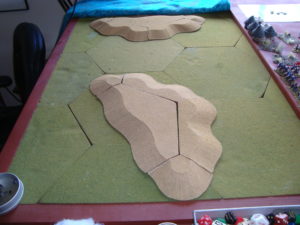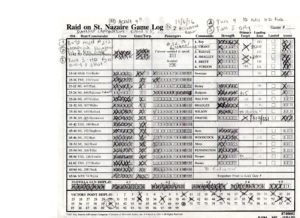Took Ranger off the shelf the other day. Had messed around with it about a year ago, after picking up the latest edition for practically nothing on E-Bay (bad box).
Each game consists of a mission. The mission has two parts, planning and execution. United States Army small unit doctrine for squad or platoon sized missions is used. If you have had any exposure to this, learning the game is simple. If not, there is a very informative booklet included to help you learn the basics.
What’s fascinating is the few number of rules. The platoon leader has to act like a platoon leader during the planning, briefing and rehearsal stages of the mission. Determine your unit’s load, work out the route from your insertion point to the objective and then back to your pick-up point, plan for supporting fires, and manage your rehearsals.
Mission execution is accomplished using the programmed text. While movement to the objective can be a little tedious, you can’t make a mistake, or something bad might happen. Make sure your unit is in an appropriate tactical formation, call halts every 750-1,000 meters, and don’t get in a hurry.
One aspect of the programmed text that confused me at first was how to stop moving once my squad had reached the objective rally point. Well, the answer was simple….call a security halt, and go to that paragraph. The text options provide the prompts to start your actions at the objective.
To be successful, actions at the objective must comply with doctrine. If you start free-lancing, bad things do happen.
This game has a very quick set-up, but preparation before the mission is lengthy, but an integral part of the game. However, after a couple of missions, SOPs can be established, reducing planning time and increasing effectiveness.
Playing time for my first mission was about 1.5 hours, all-in. This squad-size reconnaissance mission is an excellent introduction to the game. I look forward to moving on to Mission Two in the very near future.

